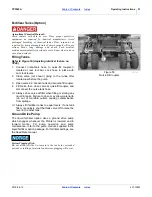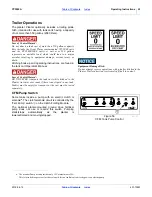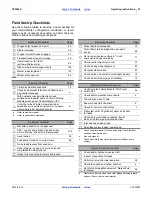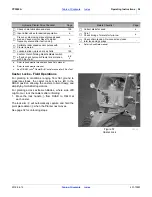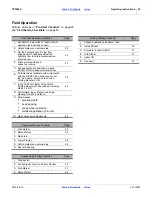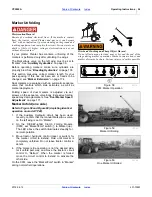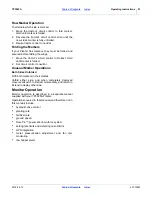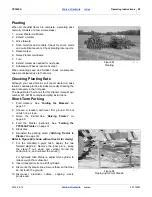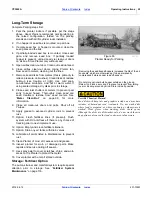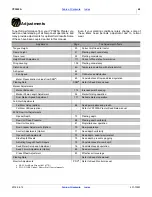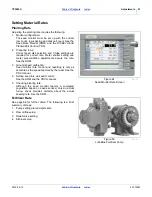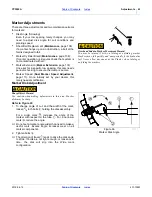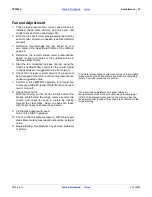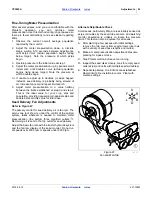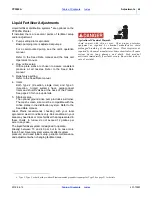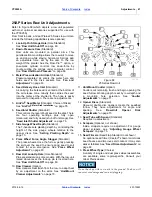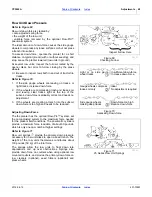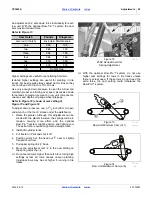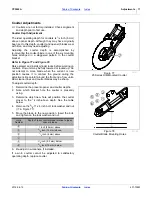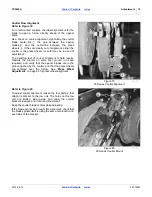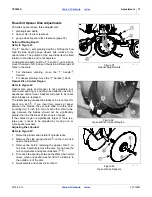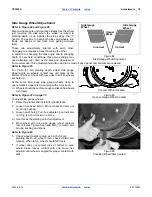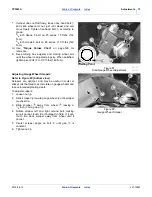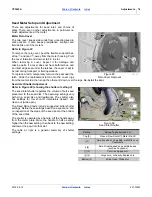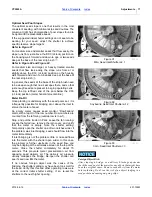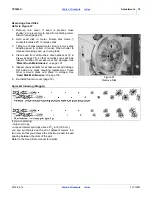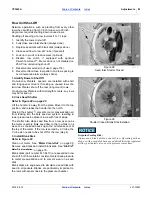
YP3025A
Adjustments
65
2019-06-12
401-705M
Fine-Tuning Meter Pressurization
After several passes, and you are comfortable with the
Planter’s operation, you can optimize meter
pressurization. Use this method during longer passes, so
there are fewer distractions (and see sidebar regarding
Milo).
1. Observe the current overall average population
reported by the monitor.
2. Adjust the meter pressurization down, in discrete
steps, waiting 5-10 seconds between adjustments,
until skips occur (actual population begins falling
below target). Note the pressure at which skips
begin.
3. Restore pressure to the initial value at step 1.
4. Adjust the meter pressurization up, by periodic small
increments, until doubles occur (actual population
begins rising above target). Note the pressure at
which doubles begin.
If unable to adjust up to doubles (or skips happen
instead), seed delivery is probably being starved of
air. Increase fan rpm and repeat limit search.
5. Adjust meter pressurization to a value halfway
between the limits established at step 2 and step 4.
This is the ideal value for your crop, disk and
population, providing equal margin against skips and
doubles. Record this value for future use.
Seed Delivery Fan Adjustments
The primary control for seed delivery air is fan rpm. The
servo vane (not shown), under the control of the split air
system, takes whatever is needed to maintain meter
pressurization (the bottom three manifold outlets
).
Remaining air is sent to the top outlet for seed delivery.
Adjust the basic fan rate with the tractor hydraulic system
and the fan rpm display of the seed monitor. Do not run
at speeds over 4000 rpm or speeds under 2000 rpm.
Alternate Skip/Double Check
Small seeds, particularly Milo, are less reliably sensed as
skips or doubles by the seed tube sensors, and watching
monitor population is unlikely to locate the pressure
limits. This test can also be quicker for all seeds.
A. After planting a few passes with initial settings,
remove the rain covers from several rows (use rows
with a variety of seed hose lengths and routes).
B. Make a meter pressurization adjustment. Resume
planting for a pass or less.
C. Stop Planter motion but leave fan running.
D. Inspect the seed disks closely. Look for empty seed
cells (skips) and cells with multiple seeds (doubles).
E. Repeat step B-step D until limits are established.
Record limits. Re-install rain covers. Plant with
median settings.
Figure 67
Fan and Manifold
29802
U
D
L
R
B
F
1

